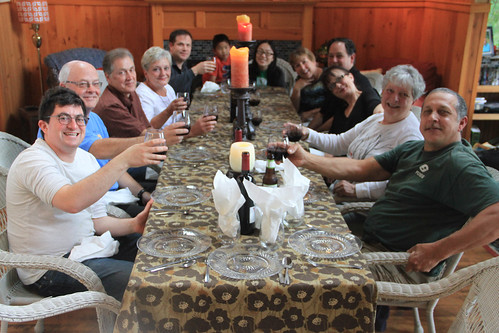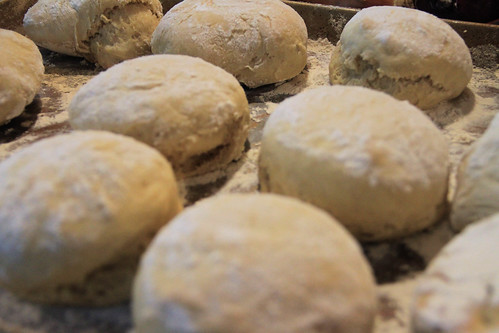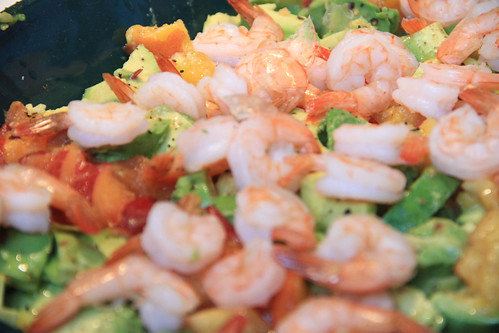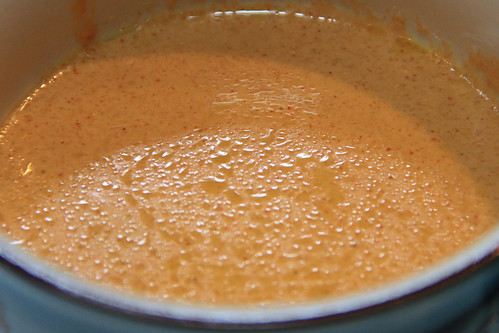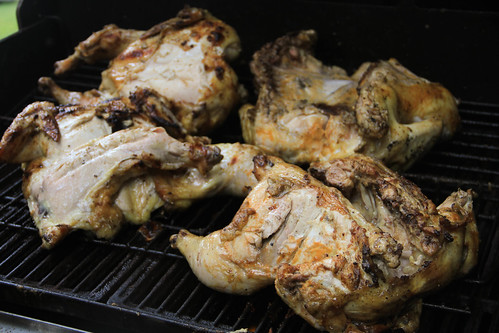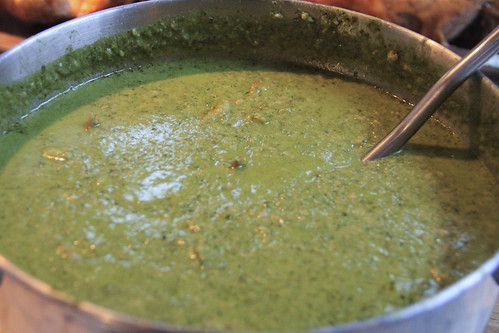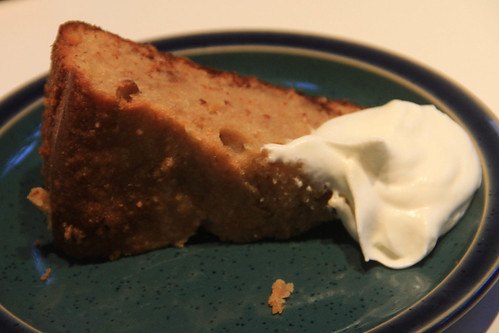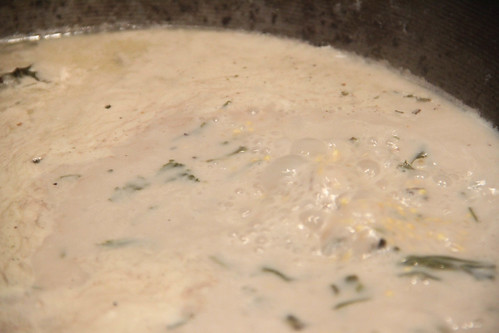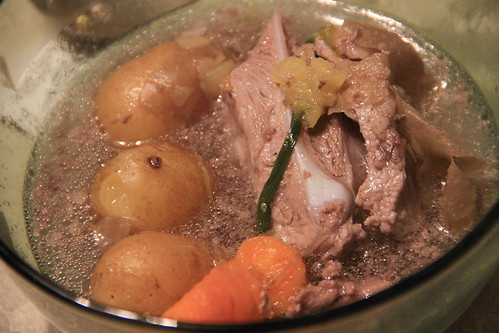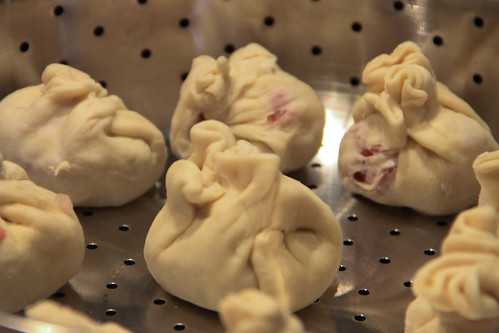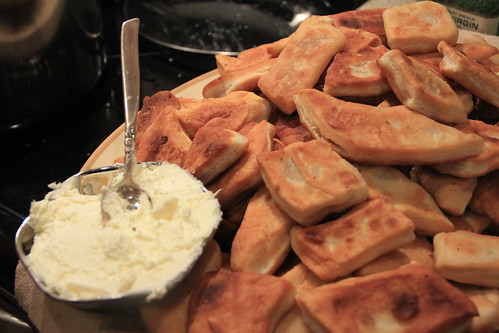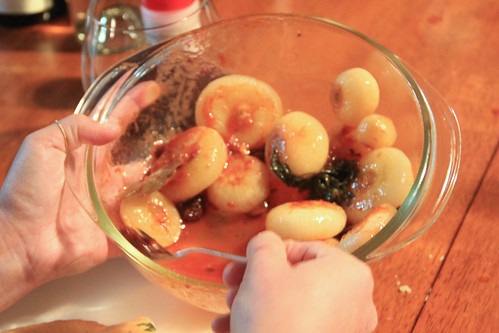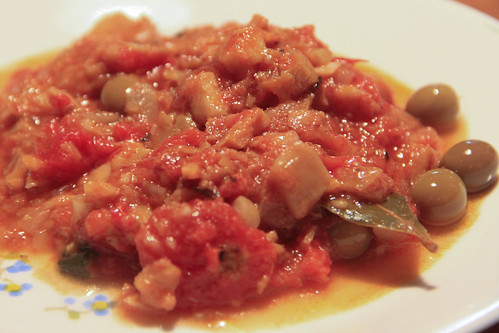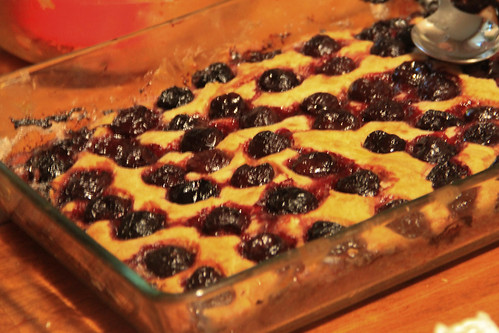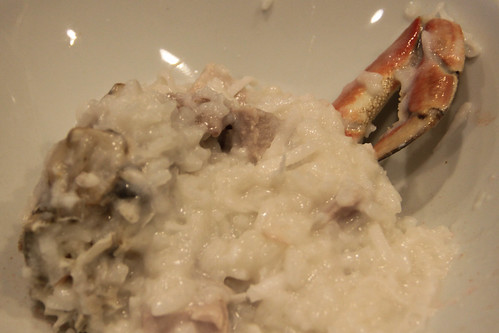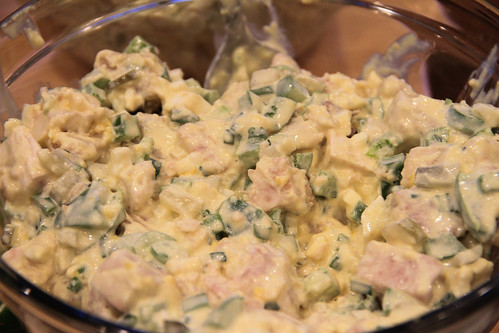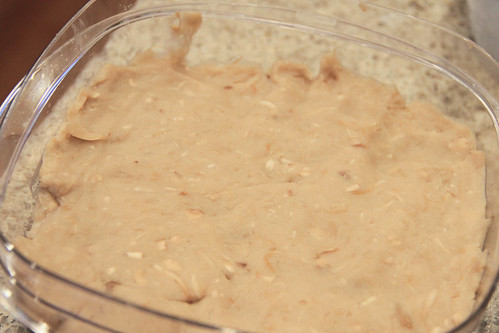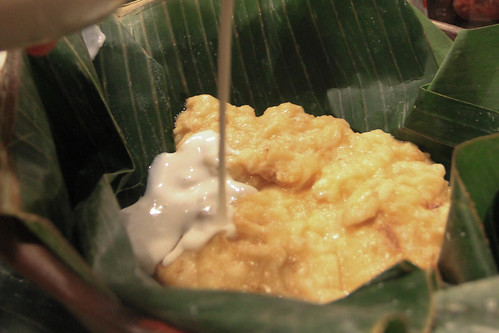
Namibia is a dry place. Most of it is desert, the best-known of which being the Kalahari, with a little strip classified as "semi-arid." In such an environment, few vegetables grow, so for thousands of years people living in this part of the world have relied on animals to turn meager grasses and shrubs into edible food. Accordingly, everyone, including the poor, makes meat a large portion of their diet, so naturally this meal featured meat in several forms. It was hard to find any recipes that were truly Namibian, so I mostly went with South African recipes that seemed most in line with what I could gather is eaten in Namibia. (Perhaps we can blame the fact that the land was administered by South Africa as "South-West Africa" from 1915 through 1990.) Since Laura and I went to South Africa the previous winter, we had a decent frame of reference for the food.
While Namibia is a sparsely populated country, our backyard was packed for this meal, since 25 of our neighbors showed up to a block-wide Nosh invite! It was a grand time, with old-timers and newcomers alike, and many neighbors who'd never gotten beyond "Hi" finally getting to know each other. We'll surely do it again.
Biltong | Air-dried beef strips | Recipe
Biltong is like jerky, except with vinegar in place of salt, and deeply intertwined into the culture and soul of a whole region rather than a mere convenience-store snack. While it's better-known globally as being a South African food, many South Africans will tell you that the best biltong comes from Namibian meat. While it can be made from many kinds of animal, particularly game, in this case I used beef.
With the right setup and a good butcher, making biltong is really simple. From your butcher, you'll want meat from the back of the hind legs, something low in fat and rather tough, that either you or they slice into fairly thin steaks. All it takes is an overnight marinade in vinegar, coriander, and salt, dry it off, and — here's where the right setup comes in — hang it to cure in a dry, ventilated environment. You could use a dehydrator at a low temperature or even use a purpose-built biltong dryer, but I went with the traditional method: hanging in the basement. (Not pictured: a mosquito net I used to keep flies away, and a table lined with paper towel to catch the dripping.) After about a week, the meat had shrunk a fair deal and was quite firm.
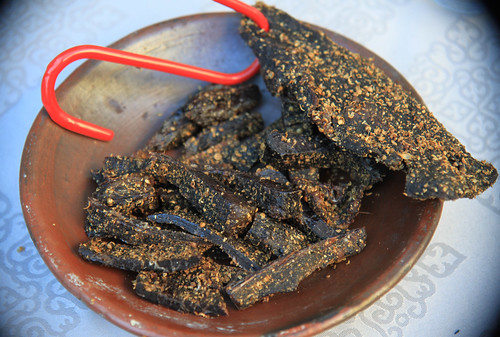
Against all odds and expectations, it was a huge success. The biltong had a great texture, firm enough to resist but not a chore to chew. And the flavor! Truly beefy, highlighted by the vinegar's tang and the nutty mustiness of the coriander. It's good snacking on its own, and just perfect with a beer.
Braai | Barbecue
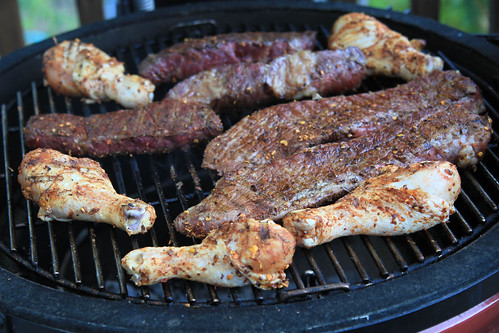
I did a lot of research to see if there was anything specific to a braai that made it substantially different from, say, an American backyard barbecue; as far as I could tell, there isn't, but it was imperative to do one given how important it is to the food culture. I'd brought back a bag of opaquely labeled "Braai Spice" from our trip to South Africa, so I just rubbed that on some pieces of steak and threw it all over the coals. It was delicious.
Potjiekos | Spiced stew | Recipe: Lamb, Chicken (minus the couscous)
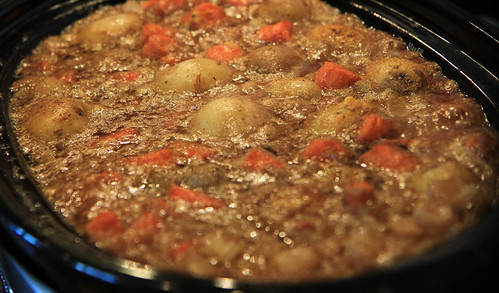
This "little pot food," as it literally translates, reminds me somewhat of the Southwestern chili con carne. It's a meal in a pot that you can cook over an outdoor fire, applying spices from afar — in this case, curry powder — to modest homegrown ingredients. One big difference, though, is that while chili is a true stew, a potjie isn't as liquid. It's also worth noting that it's stirred very infrequently, the idea is that although everything cooks in the same pot, the ingredients retain their individual flavors.
A few hours of slow cooking, combined with restrained seasoning, led to dishes that were on the mild, "comfort food" side. Despite how lamb is a more strongly flavored meat, the chicken one had a more developed flavor, perhaps due to the sly "Coke cola" lending sugar and some more spice.
Chakalaka | Tomato and bean relish |Recipe
Certainly one of the most fun dish names to say! It's also a tangy, (optionally) spicy, warm and stew-y complement to grilled meat. If you're missing one ingredient or want to adjust the proportions, by all means; this is definitely the sort of dish that's more of a throw-it-all-together rather than a strict recipe.
Mealie pap | Corn mush
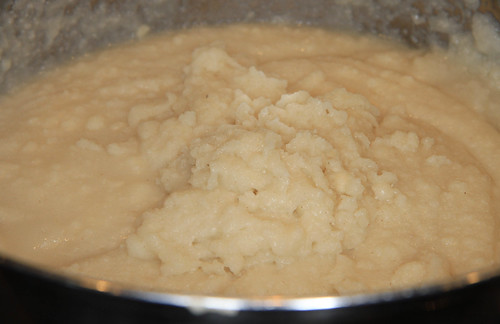
Indulge me in a bit of etymological sleuthing: looking into why corn is called "mealie," it turns out it comes from the Portuguese word for corn, milho, which itself comes from the Latin milium, for millet. (For what it's worth, the term "maize" comes directly from a native Caribbean word.)
Anyway, pap is like fufu or ugali or any of those other mushes: a bland, dense starch to accompany the meal. After having cooked probably two dozen meals of this kind of food, I think I'm finally grasping that it has to be thick enough to hold, something with no runniness to it. The tough part is that you start with a pot of water and then add the grain to it, so the only way to deal with a too-thin pap is to add more grain. We probably got the texture right, but my goodness we had a lot of leftover pap.
Amarula ice cream
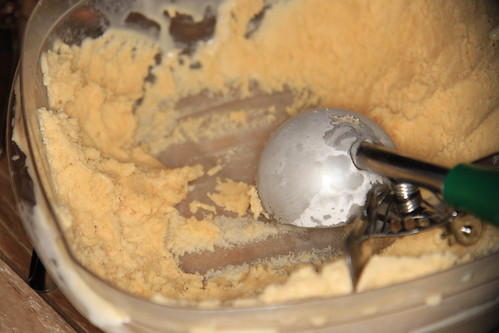
Just about the only liqueur from southern Africa that's internationally distributed is Amarula, a sweet, creamy drink made with marula fruit. (You may have seen the video of elephants getting drunk off the fruit; turns out it's a fake using footage from tranquilizations.) It's a bit similar to an Irish cream, but with a subtle tropical-fruit vibe. So I got it in my head to make an ice cream of it, adapting a recipe for Irish cream and simply substituting Amarula (any decent recipe, such as this one, will do). It turned out great: a lovely light brown color, a fantastic texture thanks to the alcohol, and a lovely smooth flavor that's far from overpowering. The perfect conclusion to a summer braai!

